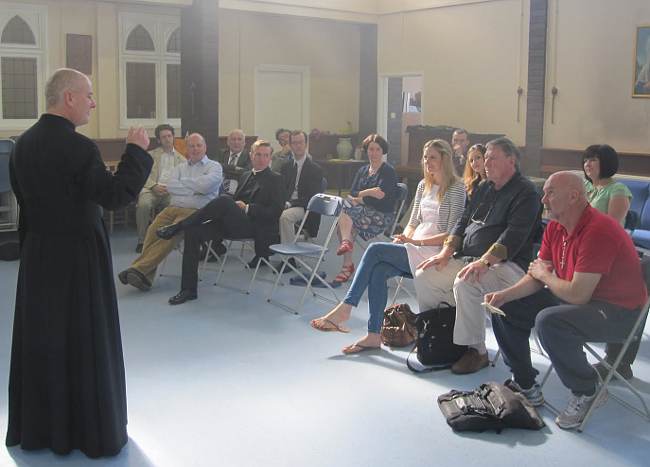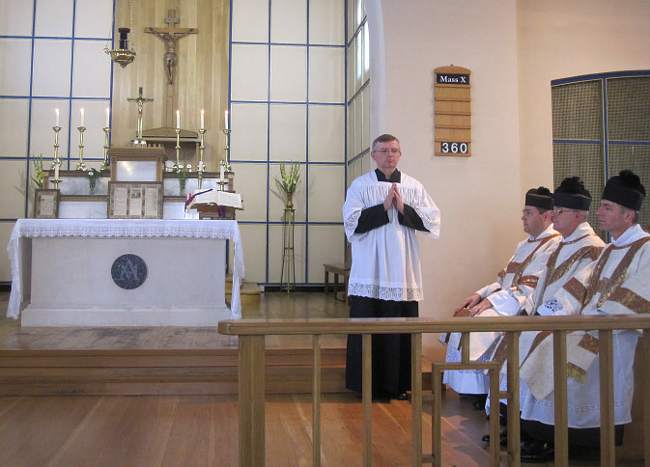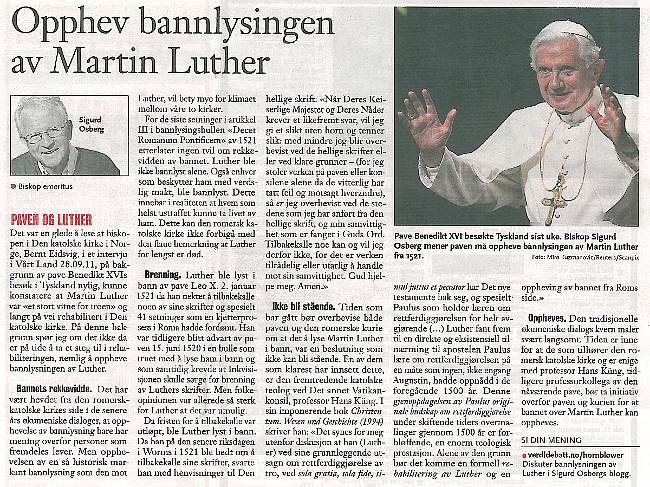11. oktober: Festen for Marias morsverdighet
I dag feirer jeg for første gang festen for jomfru Marias morsverdighet; en fest innstiftet av pave Pius XI i 1931 i anledning av 1500-jubileet for dogmet om Maria som Thetokos. (Jeg feirer private TLM-er de fleste tirsdager og en del torsdager, i oktober vil flere av disse messene bli ‘missa cantata’ – de som ønsker å komme til disse messene, kan få dato og tidspunkt av meg.)
Slik leser vi om dette i dag (i den gamle kalenderen) i Matutins 6. lesning:
From the Acts of Pope Pius XI
In the year 1931, amid the applause of the whole Catholic world, solemn rites were celebrated to mark the completion of the fifteen centuries which had elapsed since the Council of Ephesus, moving against the Nestorian heresy, had acclaimed the blessed Virgin Mary, of whom Jesus was born, as Mother of God. This acclamation had been made by the Fathers of the Church under the leadership of Pope Celestine. Pius XI, as Supreme Pontiff, wished to commemorate the notable event and to give lasting proof of his devotion to Mary. Now there had existed for many years in Rome a grand memorial to the proclamation of Ephesus; the triumphal arch in the basilica of Saint Mary Major on the Esquiline Hill. This monument had already been adorned by a previous pontiff, Sixtus III, with mosaics of marvellous workmanship, now falling to pieces from the decay of the passing ages.Pius XI, therefore, out of his own munificence, caused these to be restored most exquisitely and with them the transept of the basilica. In an Encyclical Letter Pius set forth also the true history of the Council of Ephesus, and expounded fervently and at great length the doctrine of the prerogatives of the Blessed Virgin Mary as Mother of God. He did this that the doctrine of this lofty mystery might sink more deeply into the hearts of the faithful. In it he set forth Mary, the Mother of God, blessed among women, and the most holy Family of Nazareth as the exemplars to be followed above all others, as models of the dignity and holiness of chaste wedlock, as patterns of the holy education to be given youth. Finally that no liturgical detail be lacking, he decreed that the feast of the Divine Motherhood of the Blessed Virgin Mary be celebrated annually on the 11th day of October by the universal Church with a proper Mass and Office under the rite of a double of the second class.
På katolsk.no kan vi lese om hvordan de ulike festene for jomfru Maria (også denne) har utviklet seg:
… I Roma var den eldste og eneste festen for Vår Frue 1. januar, oktavdagen for Kristi fødsel, før den hellige pave Sergius I (687-701) i 692 innførte de fire store Mariafestene Fødselen, Bebudelsen, Renselsen og Innsovningen/Opptakelsen i himmelen …
Senere, på 1200- og 1300-tallet, ble festen for Jesu omskjæring tilføyd den 1. januar, selv om den hadde blitt innført i Spania og Frankrike allerede på slutten av 500-tallet og i Roma fra 900-tallet. Senere ble den tatt inn i det romerske missalet av den hellige pave Pius V (1566-72).
En folkelig bevegelse for en fest til ære for Marias Morsverdighet begynte i Portugal på 1700-tallet, og i 1914 ble datoen for festen fastlagt til 11. oktober. Den ble utvidet til hele den latinske kirken i 1931 i anledning 1500-årsjubileet for konsilet i Efesos i 431, som ga Maria tittelen Theotókos. Deretter sto denne festen i den romerske kalenderen i 38 år (1931-69) under 11. oktober som «Marias Morsverdighet», Maternitas Beatae Mariae Virginis.
Siden kalenderrevisjonen i 1969 feires den 1. januar, som også er oktavdagen for julen og begynnelsen på det nye året, igjen høytiden for Guds Mor Maria, og dermed ble den opprinnelige romerske praksis gjeninnført. Gjeninnføringen av festen den 1. januar gjør at dagen faller i juletiden og har en økumenisk betydning, den faller også sammen med andre merkedager: for eksempel nyttårsdag (siden 153 f.Kr; offisielt fra 46 f.Kr), oktavdagen for julen, som ble innført allerede på konsilet i Efesos. …



 Kardinal
Kardinal 
